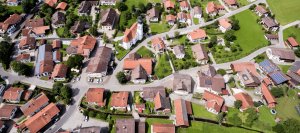The National Association of Realtors (NAR) released its latest Metropolitan Median Area Prices and Affordability report, which showed slowed sales growth in the face of skim inventory levels and hefty home prices.
The median existing single-family price increased in 162 out of 177 measured markets, and only 15 markets reported lower median prices compared to Q3 2016. Furthermore, 11 metro areas experienced double-digit increases — down from 23 in Q2. (The national median single-family home price in Q1 was $254,000, a 6.1 percent quarter-over-quarter and 5.3 percent year-over-year increase.)
“The stock market’s climb to new record highs, the continued stretch of outstanding job growth and mortgage rates under 4 percent kept homebuyer demand at a very robust level throughout the summer,” said NAR Chief Economist Lawrence Yun.
“Unfortunately, the pace of new listings were unable to replace what was quickly sold. Home shoppers had little to choose from, and many had out outbid others in order to close on a home. The end result was a slowdown in sales from earlier in the year, steadfast price growth and weakening affordability conditions.”
“While there was some moderation in price appreciation last quarter, home prices still far exceed incomes in several parts of the country — especially in the largest markets in the South and West where new home construction simply is not keeping up with job growth,” he added.
Median prices and incomesDespite the median household income increasing to $71,775, higher home prices have weakened affordability. In order to buy a single-family home at the national median price, a buyer making a 5 percent down payment would need a yearly income of $52,142.
 10 reasons most real estate agents fail
Tom Ferry: the main pitfalls that drive the huge failure rate among agents READ MORE
10 reasons most real estate agents fail
Tom Ferry: the main pitfalls that drive the huge failure rate among agents READ MORE
A buyer making a 10 percent down payment would need a yearly income of $52,240, and a buyer making a 20 percent down payment would need a yearly income of $46,435.
Yun said it’s frustrating that homebuyers in areas with strong jobs and income growth are still struggling to find affordable housing.
“Affordability pressures are frustratingly occurring in places where jobs are plentiful and incomes are rising,” he said. “Without a significant boost in new and existing inventory to alleviate price growth, job creation could slow high-cost areas in upcoming years if residents begin exiling to more affordable parts of the country.”
The areas where buyers are feeling the crunch from high median home prices are:
San Jose, California ($1,165,000) San Francisco ($900,000) Anaheim-Santa Ana, California ($790,000) Urban Honolulu ($760,200) San Diego ($607,000)The five most affordable cities are:
Decatur, Illinois ($86,300) Youngstown-Warren-Boardman, Ohio ($88,900) Cumberland, Maryland ($96,400) Wichita Falls, Texas ($113,800) Elmira, New York ($117,300) Regional breakdownIn the Northeast, existing-home sales dropped 7.9 percent in the third quarter and are now 0.5 percentage points below the third quarter of 2016. The median existing single-family home price was $283,800, a 4.1 percent year-over-year increase.
In the Midwest, existing-home sales declined 3.3 percent in the third quarter and are 0.8 percentage points below a year ago. The median existing single-family home price was $202,400 a 5.6 percent year-over-year increase.
In the South, existing-home sales fell 4.4 percent in the third quarter and are 0.2 percentage points higher than the third quarter of 2016. The median existing single-family home price was $226,100, a 5.5 percent year-over-year increase.
In the West, existing-home sales rose 2.8 percent in the third quarter and are 1.9 percentage points above a year ago. The median existing single-family home price was $373,700, an 7.0 percent year-over-year increase.
Source: click here














